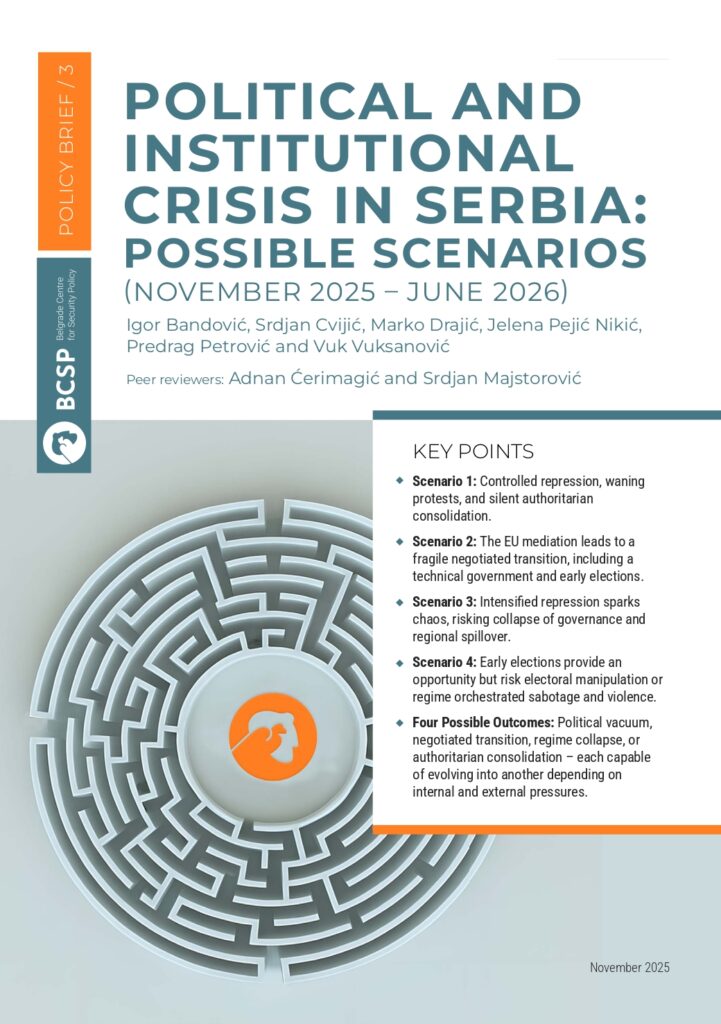Authors: Igor Bandović, Srdjan Cvijić, Marko Drajić, Jelena Pejić Nikić, Predrag Petrović and Vuk Vuksanović
Peer reviewers: Adnan Ćerimagić and Srdjan Majstorović
Introduction – Serbia’s Deepest Crisis in a Decade
Since November 2024, Serbia has been facing its deepest political, social, and institutional crisis since Aleksandar Vučić and Serbian Progressive Party (SNS) came to power in 2012. The tragedy in Novi Sad – when the canopy of the railway station collapsed, killing sixteen people – ignited widespread outrage and mass protests against corruption and official impunity. What began as demonstrations organized by opposition parties and student activists quickly evolved into a nationwide civic uprising. University-based student plenums and local citizens’ assemblies soon took the lead, transforming the protests into a broader social movement defined by decentralized decision-making and the absence of formal leadership.
The Policy Brief was originally published by the Belgrade Centre for Security Policy.

